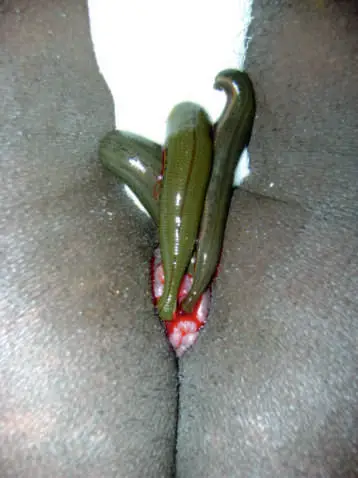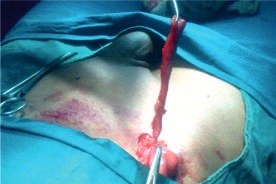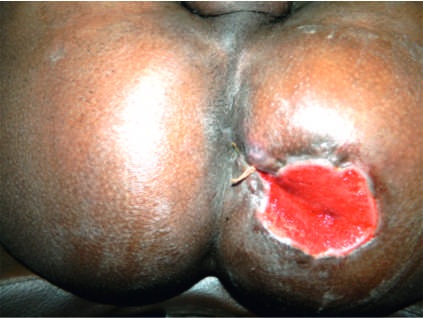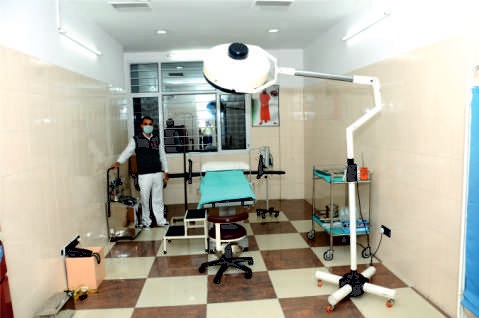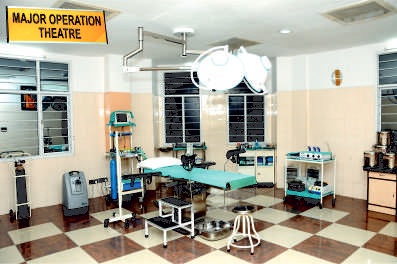Surgical Clinic
Surgery through Ayurvedic Ways
Vedas contain many important subjects of all aspects of life, so that it would be no exaggeration to call it a key to the science, art and religion. In Vedas, Rishis took account of the whole world and whole of humanity in the manifestation of the heavenly power and knowledge. In this respect, medical science (Ayurveda) is an important part of it. The knowledge of 'ayu' revealed according to the need of the time as appreciated by the Rishis in Vedas. With such background we have to consider the importance of Vedic surgical skill in present scenario. At some point of medical evolution we seem to have forgotten the basic contribution that was made by the Vedic literature to make the documentation. After Vedas the Susruta samhita is only available text of Vedic surgical skill. Many more references are also available in other Ayurvedic texts. In different Puranas these examples are quoted in the forms of stories. Vagbhatta samhita is another milestone in this field. Our understanding of the ancient Vedic medical skill is limited due to lack of Vedic textual knowledge. In this consideration, review of the Ayurvedic literature is necessary for the better out come.
A number of examples are available in different texts about the zenith of surgical skill at that time. Susruta has taken the lead in this regard to deal with numerous surgical procedures. From incision and drainage operation of an abscess to reconstructive surgery, Susruta passed a very long way. His command over all the branches of surgery is remarkable. Surgical and para surgical procedures are discussed extensively in the text. Apart from this he described surgical instruments, wound management, importance of blood in surgery and principles of plastic surgery. It can be observed from this sort of description that the Indian surgery is scientific out come of the vast manual experience of the surgical practitioners during thousands of year.
In present context when the modern surgery is on its peak, a part from simple surgical procedure, organ transplantation, surgical and Para surgical procedures on brain and he31i are very common in highly specialized centers of India and abroad. These techniques are boon for the suffering humanity.
Previously impossible operations became common with the high tech instruments and the advent of anesthesia. Transplantation of heart, kidney and liver are the landmarks of modem surgery. Anesthesia plays an important role in these operations. Especially organ transplantation, neuro surgery and plastic surgery are more dependable on anesthesia.
Millions of surgeon, physician, anesthetist, other scientist and research personnel of biosciences contribute the network of modern surgery in India and abroad. The modern surgery is progressing day by day but every science has its limitations and scope. After the invention of LASER, cryosurgery and endoscopic surgery, operations became easier and more fruitful. The governments of the different countries of the world, world Health organization and pharmaceutical business houses patronize this system. In comparison to such a big system, what is the position of Ayurvedic surgery?
And what is the utility of Ayurvedic surgery in present time? Keeping these points in mind one should discuss and reply above-mentioned questions. In reply to these questions it can be announced that Ayurvedic surgery in terms of para-surgical procedures may contribute a lot in surgical lesions. Management of fistula in ano, tumours, urolithisiasis, wound healing and application of leech are the promising features of Ayurvedic surgery.
The history of surgery in India dates back to Vedas in which transplantation of head, amputation of legs and its replacement by iron, legs have been mentioned, performed by divine twin Asvini Kumaras. Susruta Samhita is the oldest available text of surgery in the world. In fact we would know almost nothing about the ancient Indian surgery if Susruta samhita had not been preserved. This book not only represented the embodiment of surgical knowledge of the past millenniums, but also was much ahead of his times in expounding and practicing the surgical principle, the validity of which are realized today. It is very interesting to know that, the study of Vedas, Indian philosophy, epics and Ayurveda was common in Kambuj. In Yasoverma's Lole inscription, it is said that, the king cures the diseases of his subject, and his speech is called Susrodita (originated from susruta). It is important that, apart from other Ayurvedic texts, Susruta-Samhita was also popular in this region.


